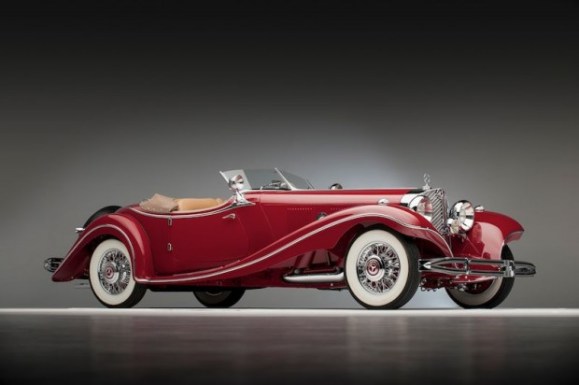Published July 3, 2012, Los Angeles Daily Journal – Some 67 years ago, the last of the great world wars drew to an end, and with that we briefly closed a chapter on crimes against humanity, failures of diplomacy, and tyrant dictators seeking to rule it all. With laws of morality no longer in place, soldiers pillaged with unnatural frequency and nations took without due process – all with the expectation that the details would be lost in the chaos of it all.
And for many years they were mostly right. Families lost prized possessions and museums were robbed of historical artifacts, without any real hope of recovery or compensation. Yet, recent court decisions are shedding light on the rights of those who were victimized nearly seven decades ago.
Last month, a court in Hamburg, Germany ruled that the heirs of Hans Prym had the right to the return of one of the most important Mercedes-Benz cars in existence. The 1935 Mercedes-Benz 500 K Roadster – one of 29 built – was the centerpiece of the Mercedes-Benz display at the Berlin Motor Show before being sold to German industrialist Hans Prym later that year. Hans Prym is best known for having invented the clothing snap, and the Prym family business is considered to be the oldest family business in Germany, dating back 14 generations.
The vehicle had been stored at the Prym family estate near the border of Belgium during World War II when U.S. troops took over the property and set up a military outpost. Prym had been imprisoned by Allied forces, and U.S. troops confiscated the Mercedes-Benz. The vehicle was then shipped to the U.S. where it was sold on the collector car market, trading hands several times over.
The vehicle publicly resurfaced in 2011 when Southern California resident General William Lyon sold it at the Pebble Beach classic car auction for $3.8 million. General Lyon, whose car collection is worth an estimated $200 million, sold the car at RM Auctions with two other classic Mercedes-Benz vehicles. It is likely that as the car changed hands over the years, its origin became less perfectly understood. In selling the car, RM reported that the vehicle’s complete history was “unknown at this time.”
Dutch car collector Frans van Haren bought the car and then shipped it to Essen, Germany for the Techno Classica collector car event. When the vehicle arrived at the event, the Prym heirs were waiting with German police who impounded the car, pending court resolution.
In June, the Hamburg Regional Court ruled that the heirs were entitled to the car, noting that the German statute of limitations for conversion is tolled while the property is out of the country. And with this, a firestorm of litigation is sure to ignite, as each purchaser of the vehicle attempts to reclaim their purchase money from the prior owner. This, in itself, creates a host of interesting issues, as various statutes of limitation will likely come into play, with varying rules on tolling and discovery.
In a similar decision, U.S. District Judge Thomas Griesa of the Southern District of New York ruled that a book collector was required to return a 16th century book worth $600,000 to a museum in Stuttgart, more than six decades after it was stolen by a U.S. Army Captain. Likewise, the U.S. Immigration and Customs Enforcement Office recently reported that it is requiring the return of a porcelain centrepiece valued at over $1 million to a museum in Stuttgart. The artifact had been stolen from a castle where it was hidden by a German museum during World War II.
Yet, one of the most significant legal challenges to a war taking is the one brought by the seven grandchildren of Louis Renault, who have sued the French government for reparations after the French government took the entire Renault auto-making business from the family following World War II.
During the Nazi occupation of France, Renault had fallen under German control and was producing tanks and vehicles for the Third Reich. The company’s founder, Louis Renault, claimed to be opposed to the German occupation, but members of the French resistance believed he was collaborating with the Germans.
Three weeks after France was liberated in 1944, Louis Renault was arrested on unspecified charges. Renault died one month after imprisonment. Four months later, General Charles de Gaulle’s provisional government nationalized the automaker, even though Renault had never been tried or convicted. The other two French major automakers, Citroen and Peugeot, were also under German control, but neither were nationalized after the war.
The grandchildren of Louis Renault have sued the government under a groundbreaking law enacted in March 2010 that allows citizens to challenge the conformity of legislation with the French constitution. The heirs say their family received no compensation from the French government at the time, and that the move was unfair punishment for Louis Renault’s attitude during the war. Because Renault had not been convicted of a crime, and no compensation was paid, the family argues that the confiscation was unconstitutional. If successful, the heirs stand to receive $143 million.
It is unknown how the Renault legal battle with turn out, but it is certainly interesting – and encouraging – to see that significant moves are being made to return war-taken property to their rightful owner. It is enough to have suffered through the travesty of war; they should not have the added burden of shouldering a financial loss that was unjustly administered.
